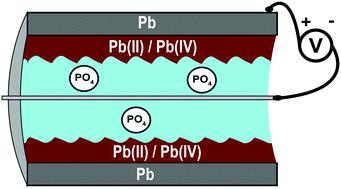当前位置:
X-MOL 学术
›
Environ. Sci.: Water Res. Technol.
›
论文详情
Our official English website, www.x-mol.net, welcomes your
feedback! (Note: you will need to create a separate account there.)
Preventing leaching from lead water pipes with electrochemistry: an exploratory study
Environmental Science: Water Research & Technology ( IF 3.5 ) Pub Date : 2021-5-21 , DOI: 10.1039/d1ew00160d G. P. Lobo 1 , A. J. Gadgil 1
Environmental Science: Water Research & Technology ( IF 3.5 ) Pub Date : 2021-5-21 , DOI: 10.1039/d1ew00160d G. P. Lobo 1 , A. J. Gadgil 1
Affiliation

|
Toxic levels of lead leaching from ageing water distribution infrastructure affect over 5000 public drinking water systems in the US. Pipe replacement, the most effective solution to this problem, is prohibitively expensive. Chemical conditioning of drinking water using orthophosphates, although cost-effective, does not quickly stop lead leaching once it has started. We propose a novel approach to stop lead leaching: to rapidly form an insoluble scale within lead pipes using an external power supply. We report on the feasibility of this approach by first anodizing lead coupons and lead pipes reclaimed from a local water distribution using a phosphate electrolyte and different potentials, pH values, and phosphate concentrations. We subsequently exposed these anodized lead coupons and pipes to synthetic tap water to evaluate their lead leaching rates. We found that polarizing lead coupons in the presence of a 0.05 M phosphate solution decreased lead leaching by up to a 100-fold, relative to leaching from polished bare lead. Similarly, polarizing the reclaimed lead pipes (with a preexisting scale) decreased lead leaching from an average of 36 ppb to 7 ppb. These results were observed when applying potentials that favor Pb(IV) formation, which resulted in the buildup of PbO2 and Pb5(PO4)3OH in both lead coupons and pipes. Our findings indicate that this novel technology has the potential to rapidly decrease equilibrium lead levels in tap water below the EPA action limit of 15 ppb, and thus deserves further exploration.
中文翻译:

用电化学方法防止铅水管道中的浸出:一项探索性研究
老化的配水设施中铅的有毒水平影响了美国的5000多个公共饮用水系统。管道更换是解决此问题的最有效方法,价格过高。使用正磷酸盐对饮用水进行化学调节,尽管具有成本效益,但一旦开始就不能迅速停止铅的浸出。我们提出了一种新颖的方法来停止铅的浸出:使用外部电源在铅管内迅速形成不溶性水垢。我们报告了这种方法的可行性,方法是首先使用磷酸盐电解质和不同的电势,pH值和磷酸盐浓度,对从局部水分布中回收的铅块和铅管进行阳极氧化处理。随后,我们将这些阳极氧化的铅块和管道暴露于合成自来水中,以评估其铅浸出率。我们发现,相对于从抛光的裸露铅中浸出,在0.05 M磷酸盐溶液中存在的极化铅样片可使铅浸出减少多达100倍。同样,对回收的铅管(具有预先存在的水垢)进行极化处理,可使铅的浸出从平均36 ppb减少到7 ppb。当施加有利于Pb(IV)的形成,这导致在铅块和管道中都堆积了PbO 2和Pb 5(PO 4)3 OH。我们的发现表明,这项新技术有可能迅速降低自来水中的平衡铅水平,使其低于EPA作用限值15 ppb,因此值得进一步探索。
更新日期:2021-05-25
中文翻译:

用电化学方法防止铅水管道中的浸出:一项探索性研究
老化的配水设施中铅的有毒水平影响了美国的5000多个公共饮用水系统。管道更换是解决此问题的最有效方法,价格过高。使用正磷酸盐对饮用水进行化学调节,尽管具有成本效益,但一旦开始就不能迅速停止铅的浸出。我们提出了一种新颖的方法来停止铅的浸出:使用外部电源在铅管内迅速形成不溶性水垢。我们报告了这种方法的可行性,方法是首先使用磷酸盐电解质和不同的电势,pH值和磷酸盐浓度,对从局部水分布中回收的铅块和铅管进行阳极氧化处理。随后,我们将这些阳极氧化的铅块和管道暴露于合成自来水中,以评估其铅浸出率。我们发现,相对于从抛光的裸露铅中浸出,在0.05 M磷酸盐溶液中存在的极化铅样片可使铅浸出减少多达100倍。同样,对回收的铅管(具有预先存在的水垢)进行极化处理,可使铅的浸出从平均36 ppb减少到7 ppb。当施加有利于Pb(IV)的形成,这导致在铅块和管道中都堆积了PbO 2和Pb 5(PO 4)3 OH。我们的发现表明,这项新技术有可能迅速降低自来水中的平衡铅水平,使其低于EPA作用限值15 ppb,因此值得进一步探索。











































 京公网安备 11010802027423号
京公网安备 11010802027423号